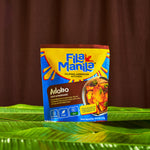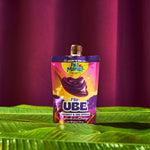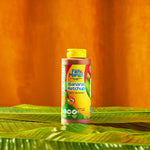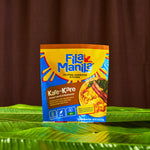

Filipino Food Gifts: A Christmas Gift Guide for Filipino Food Lovers
Sleigh bells ring, are you listening?
Thanksgiving has come to a close, and moods shift from grateful to joyous. Christmas is coming, and it’s the most wonderful time of the year.
Filipino American families have a particular love for Christmas, different from most American households. For Filipino Americans, Christmas is the time of year for balikbayan boxes, placing lechon orders, and hanging up parols — as Filipino American website, Asian Journal, notes.

In the spirit of the upcoming Filipino American Christmas celebrations, Fila Manila has the perfect gift guide for Filipino food lovers, with hand-picked product recommendations for all sorts of personalities.
For the Traditionalist: Adobo Sauce
Do you have a Tito who isn’t ‘with the times’? Or a Lolo or Lola whose way of viewing the world is more traditional?
Filipino families place a deep emphasis on tradition, on extended family structures and respect for elders (the concept of “utang na loob,” which is Tagalog for debt of gratitude).

There is a perfect gift that would represent these qualities best — and that is an adobo sauce.
Why? As a dish, adobo represents Filipino history and tradition.

The modern adobo is simply a pre-colonial Filipino tradition now evolved. Prior to Spanish colonization, indigenous Filipino communities developed cooking methods to preserve food under warm climates. The most common included boiling and braising, and to keep their food fresher for a longer period, dishes were prepared with plenty of vinegar and salt to prevent bacteria growth. This was adobo in its earliest form.
For centuries, adobo has remained a key part of Filipino cuisine. But as Filipinos began migrating internationally for work, the dish soon became synonymous with Filipino identity.
Because adobo could be made with simple ingredients like chicken, soy sauce, vinegar, garlic, and pepper, it was easy to prepare. For Filipino American immigrants who couldn’t easily find Filipino ingredients in their new homes, adobo’s simplicity made it an easy way to recreate the tastes of home.
Combining convenience and nostalgic connection to home, adobo soon became a staple dish for Filipinos across the globe. Now, as Filipinos are one of the most diasporic populations in the world, adobo is the first dish that comes to mind when someone thinks about Filipino cuisine.
So, from history and even today, adobo has represented the Philippines’ traditions — from survival in a tropical climate to a migrant population adapting to their surroundings.
Read more: an introductory crash-course to the history of adobo!

For the traditionalists, read more on the Fila Manila adobo sauce — a simple, easy, and healthy way to recreate the centuries-long tradition of adobo.
For the Trendsetter: Ube Jam
There’s no shortage of trendy Filipinos online — Bretman Rock, Bella Porch, and Manny Jacinto are three household names that quickly come to mind. Filipinos are also active creators in dance trends like ‘Emergency Budots’ (which garnered attention from CNN in August).
@bluewixie bini stacey, sheena, gwen, maloi, colet, aiah and mikha dancing budots emergency remix tiktok trend song😭😂 please press 1 gwen if you need help 😭🤣 #bini #binistacey #binimaloi #binisheena #binimikha #binigwen #binicolet #biniaiah ♬ original sound - jerika
Our pick for capturing this hip, modern spirit is an ube jam.
Why? Ube is easily the most trendy Filipino flavor in the current food market — in January of 2024, ube was declared “Flavor of the Year” by flavor company T. Hasegawa USA.
In fact, the entrance of ube flavor into mainstream tastes was in a very trendy manner. The American public first learned about ube in 2015, when Manila Social Club, a Miami-based Filipino eatery, began selling a gold ube donut filled with ube mouse and an array of golden garnish. It was sold for $100 each, and was wildly popular, according to Forbes.

There are other sources that also argue ube became hyper-popular during the pandemic. With its bright purple color, ube looked great in photos and videos. It became an internet hit to a population that was staying home and spending more time on social media.
All trends are destined to slow down, and while ube’s hyper-popularity is seen less often, perhaps it’s only because the ingredient has already become so mainstream. Just in October, New York Times Cooking released a 30-minute video about ube on their Myster Menu series.
Ube, then, captures the same trendy spirit found in many young Filipinos and Filipino Americans today.
Learn more about Fila Manila’s Ube Jam here — made with natural ingredients, real ube and real coconut too.

For the Food Innovator: Banana Ketchup
Filipino homecooks are innovative chefs, no doubt. Following colonization from three different countries, you often find some of the most experimental flavor-mixing in the Philippines’ cuisine.
There are curries with peanut butter (kare kare), pasta with sugar and other sweeteners (Filipino spaghetti), porridge with chocolate (champurrado), rice cakes with salted egg and cheese (bibingka).

For the kitchen master-chefs who create dishes like these for Filipino family gatherings, our gift-of-choice is a bottle of banana ketchup.
Why? Banana ketchup perfectly represents the way Filipinos have become innovative with food.

First, it’s a fruit ketchup developed in the Philippines during the 1930s (the fact that it’s a ketchup made of a sweet fruit is an innovative feat in itself!). Even though it’s made of bananas, it’s still a ketchup — so it has the same sweet and sour flavor, and works great in an aioli or served on the side with fries.
Maria Orosa — a Filipino food technologist, chemist, and humanitarian — is credited for inventing banana ketchup. During World War II, tomatoes were difficult to grow in the Philippines’ tropical climate, and it was too expensive to import them.

No tomatoes meant no tomato-like products like ketchup, so Maria Orosa took matters into her own hands: she combined bananas native to the Philippines with garlic, vinegar, sugar, spices, and red coloring to make a local, tomato-less version of the famed tomato ketchup. (Talk about being innovative with food!).
Today, banana ketchup embodies the innovative spirit found in Filipino kitchens.
Unfortunately, Filipino American communities were recently delivered news that new imports of banana ketchup would not be allowed in the United States, following an alert issued by the U.S. Food and Drug Administration.
While this prevents Filipino food lovers in the United States from accessing banana ketchup imports, there are banana ketchup products produced domestically that you can use as a gift for your innovative loved ones.
Read more: what the new FDA alert means for banana ketchup, and where you can find banana ketchup in the U.S.
One of such products includes Fila Manila’s banana ketchup. It’s available in Target and Walmart, and is made with natural ingredients. With the same innovative spirit of banana ketchup, its food color uses carrot and black currant instead of dyes like Red-40.

Learn more about the product here.
In conclusion, there's Filipino food for everyone.
Whether you’re giving to a traditionalist, a trendsetter, or a food innovator, there’s a gift for Filipino food lovers of all sorts.
And somehow, if the person you're giving to is all three of these, check out our Shark Tank Pack, complete with all of these items.






